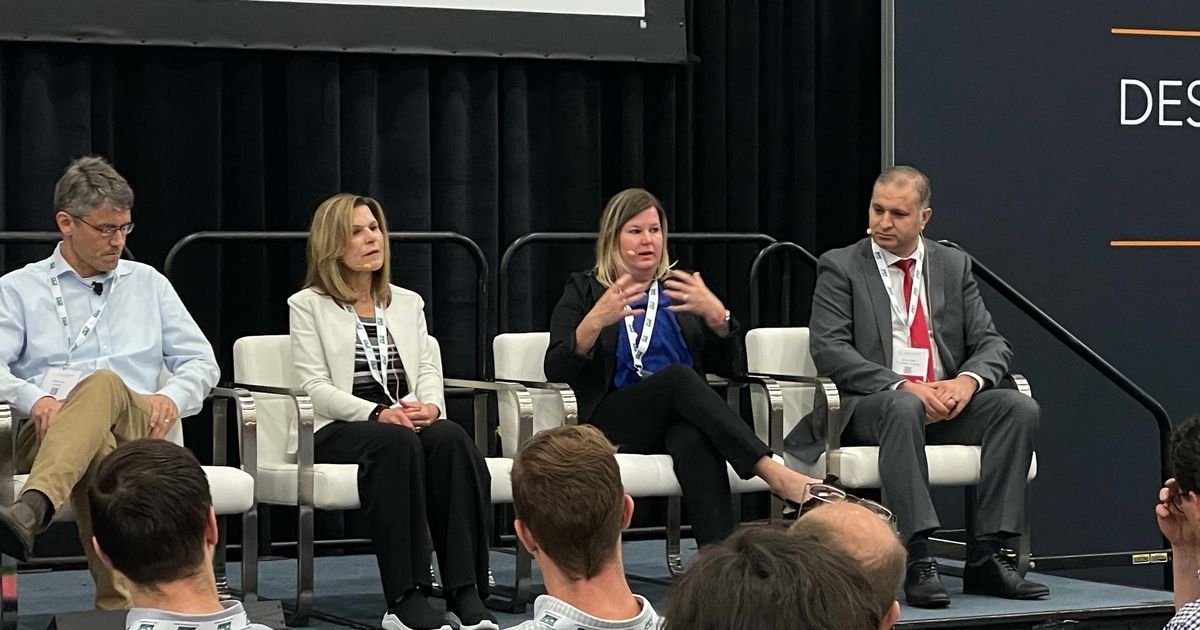
Detroit — Plastics are embracing the future of the automotive market, even though that future is changing every day.
A panel of industry experts looked into the future May 25 during a panel discussion at the Injection Molding & Design Expo in Detroit.
“A lot of changes aren’t done yet in the supply chain,” said Carla Bailo, president and CEO of the Center for Automotive Research. “Companies are working every day to get the components and workers that they need. Companies have to think more deeply into the supply chain.”
Auto firms “need to anticipate and work together” to validate alternative solutions, according to Katie Roco, customer engineering director with Forvia SE’s interiors business. “Planning is the only way to be successful at this time,” she added. Forvia recently changed its name from Faurecia.
Early in the COVID-19 pandemic, customers “tried new materials and took risks, because they had no other options,” said Alper Kiziltas, technical expert for sustainability and emerging materials with Ford Motor Co.
When asked about “the new normal,” panelists said they weren’t sure if such a thing existed.
“We can’t go back to the way things used to be,” Bailo said. “We need more flexibility. … It’s not about what’s cheapest anymore. … We need to look at other factors.”
“I don’t think we’re getting back to normal,” said Jeff Stout, executive director of Yanfeng Automotive Exteriors. “Inventory days can be below what used to be the red line and still be OK, because production rates are changing day to day.”
Roco added that “traditionally, OEMs are risk averse at times, but now they need to take risks and look at changes and apply those to larger volumes.”
Prices also have become a larger issue, with the average new vehicle costing around $48,000, while the average U.S. household income is $66,000.
“We’ve priced out a lot of people from buying a new car,” Bailo said. “The numbers are out of sync.”
Electric vehicles also are changing the game in many ways. Stout said acoustics are different in electric vehicles because they don’t have engine noise. “EVs are still kind of a new thing, so they need to look special,” he added.
“The car of the future is all about customer experience,” Bailo said. “Customers care about Easter eggs and being delighted.”
